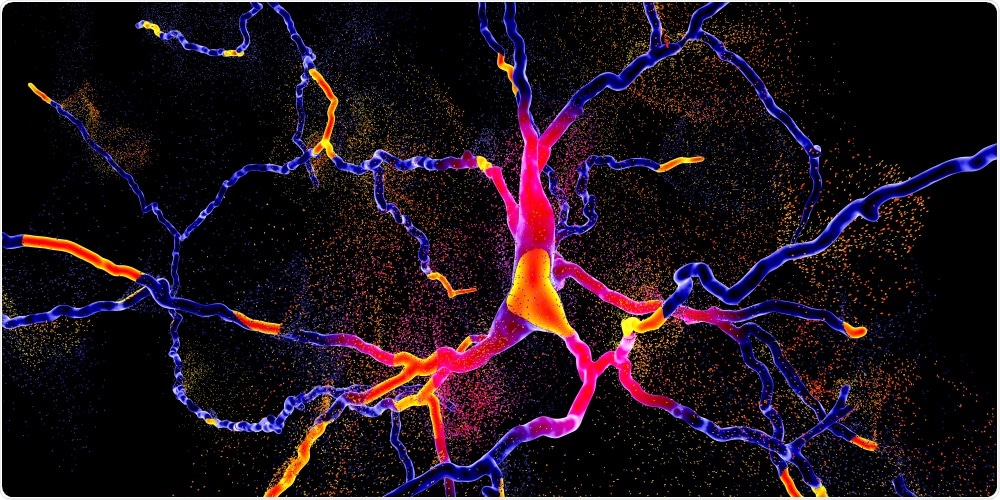Researchers in the Netherlands have shown that mutations in four distinct genes that lead to Kleefstra syndrome and clinical features of intellectual disability and autism cause hyperactive neuronal network communication and altered excitatory-inhibitory balance.

Image Credit: Kateryna Kon/Shutterstock.com
Monica Frega (Donders Institute for Brain, Cognition and Behaviour, Nigmegan) and colleagues say their results may be the first to shed light on why core clinical features are shared in Kleefstra syndrome and other phenotypically similar, but genetically distinct neurodevelopmental disorders.
The genetics of neurodevelopmental disorders
Neurodevelopmental disorders are genetically and phenotypically heterogeneous. Although more than 800 genes have been found to be involved in some of the disorders, understanding the genetic elements involved is still lacking.
Furthermore, researchers do not properly understand how distinct gene variants can sometimes lead to similar phenotypic features that are shared in different disorders.
Recent research has suggested that the effects of different gene variants converge at the molecular level, yet the nature of these converging pathways and how their disruption causes shared features of neurodevelopmental disorders is still not clear.
Research has previously shown that loss-of-function mutations in the gene EHMT1 (Euchromatin Histone Lysine Methyltransferase 1) causes Kleefstra syndrome.
However, Frega and the team have also previously shown that mutations in four other chromatin modifiers lead to core disease features that resemble Kleefstra syndrome, which the researchers now refer to collectively as Kleefstra syndrome spectrum (KSS).
Which gene variants are involved?
Specifically, these mutations include a missense mutation in each of SMARCB1 (SWI/SNF-related matrix-associated actin-dependent regulator of chromatin, subfamily B member 1); MLL3 (Histone-lysine N methyltransferase 2C) and NR1I3 (Nuclear receptor, subfamily 1 group I member 3) and a frameshift mutation in MBD5 (Methyl-CpG-binding domain protein 5).
The resulting proteins are epigenetic regulators of gene expression and have been identified in other disorders that share the cognitive features seen in KSS. For example, missense mutations in SMARCB1 have been associated with Coffin-Siris syndrome and EHMT1 duplications have been associated with schizophrenia.
Animal studies have shown that loss-of-function mutations in EHMT1 lead to impaired memory and learning and one study suggested it disrupts cortical neuronal network activity during development. However, the underlying mechanisms are yet to be determined.
Furthermore, studies of protein interaction and gene interaction have shown that each of the KSS proteins are involved in shared biological processes.
To understand how KSS variants may lead to the phenotypic convergence seen in KSS, Frega and the team have studied loss-of-function in EHMT1, SMARCB1, MLL3, and MBD5 to investigate the effects on neuronal network development at the molecular, cellular and network activity level.
What did the study find?
As reported in the journal Cell Reports, the team found that the mutations in the different genes that led to KSS did indeed converge at the molecular, cellular and neuronal network levels.
KSS gene deficiency caused hyperactivity in neuronal network communication with an altered network organization. The deficiency also altered excitatory-inhibitory balance.
Although the functional and molecular changes were different in each of the four KSS gene knockdowns, the neuronal networks that resulted from KSS deficiency were all hyperactive during development and all had a network organization that was different from wild-type networks.
In the case of EHMT1 deficiency, after spiking activity in immature neuron cultures, the altered network burst pattern was generally accompanied by an increase in network burst rate (hyperactivity) in mature networks.
In the case of SMARCB1, MLL3 and MBD5 deficiency, all the network phenotypes exhibited remarkable similarities, with an altered network burst pattern that was or was not accompanied by a hyperactive burst rate.
Our results, therefore, imply that the KSS-gene-deficient networks share a common mode of failure when establishing network communication,”
The implied shared mode of deficiency was supported by further analysis showing that changes in measures of network activity occurred in a genotype-specific manner.
For example, in the EHMT1-, SMARCB1-, MLL3-, and MBD5-deficient networks, the mode of neuronal hyperactivity were found to be an increase in firing rate, while in the MLL3-deficient network, the burst rate was altered.
While the networks resulting from EHMT1-, SMARCB1-, MLL3-deficiency tended to exhibit hyperactivity at a later stage of development, networks resulting from MBD5-deficiency exhibited excessive activity at an immature stage of development.
What happened at the cellular level?
At the single-cell level, the researchers found that cultures deficient in SMARCB1, MLL3, and MBD5 had significantly reduced excitatory and inhibitory synaptic inputs. EHMT1-deficiency, on the other hand, was associated with a significant decrease in inhibitory synaptic input but had no effect on excitatory synaptic input.
“The specific effect of loss of EHMT1 on inhibition is relevant because imbalanced E/I is associated with ASD in humans and rodent models,2 writes the team. “In particular, a loss in the efficiency of inhibitory synaptic strength has been observed in many NDDs, including Rett syndrome and Fragile X syndrome.”
The researchers say that taken together, their results indicate that neuronal circuits represent logical loci for the manifestation of a disease, where changes in diverse genes, protein networks, cell types, or developmental stages may elicit similar or specific changes in the circuit function.
In the context of integrated analysis of NDDs caused by haploinsufficiency in interrelated chromatin pathways, our results may provide a first explanation for why core clinical features are shared by KSS patients and other phenotypically congruent, but genetically distinct, disorders involving ID and ASD,”
Journal reference:
Frega M, et al. Distinct Pathogenic Genes Causing Intellectual Disability and Autism Exhibit a Common Neuronal Network Hyperactivity Phenotype. Cell Reports 2020;30(1): p173-186 https://doi.org/10.1016/j.celrep.2019.12.002